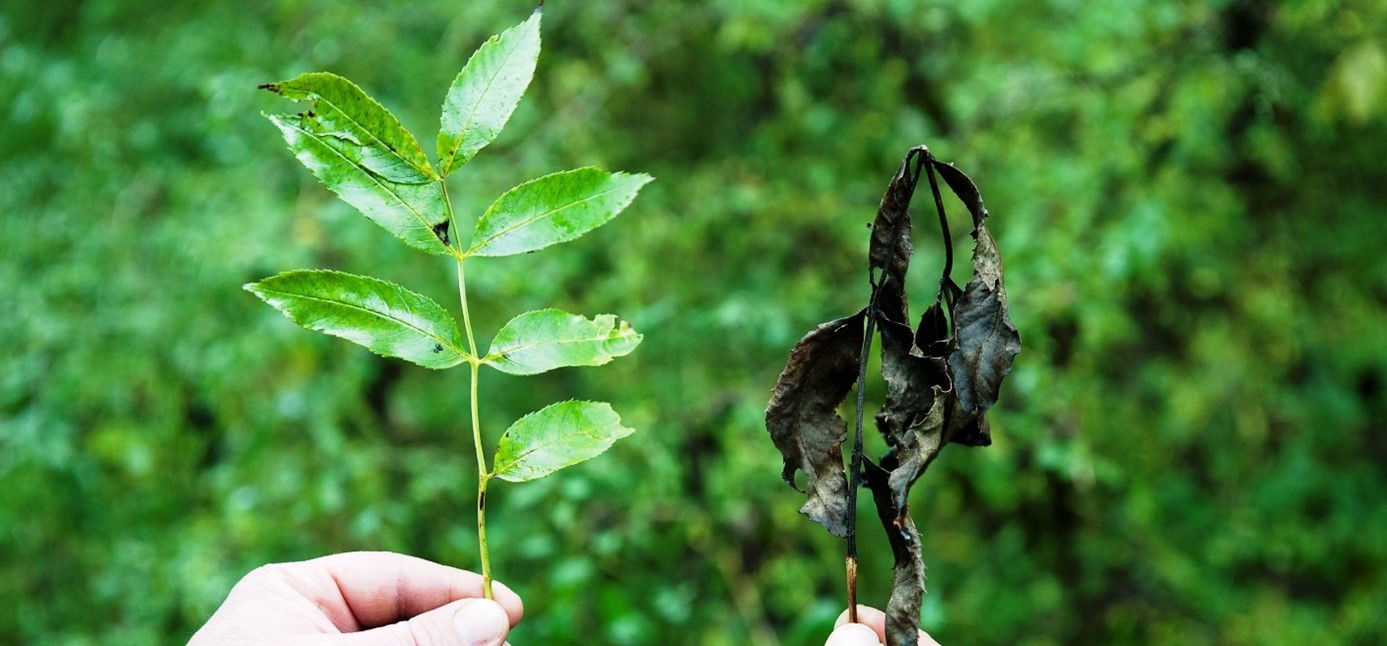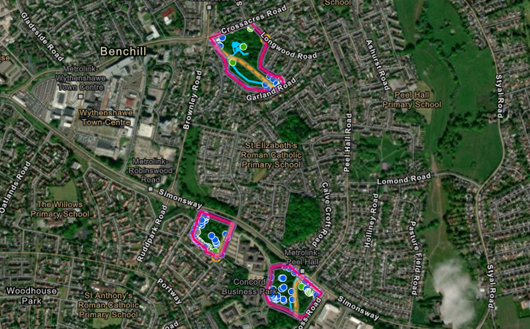- Client City of Trees
- Location Manchester
- Services Arboriculture, GIS
- Sector Asset Management
Assessing trees across 5 locations for ash dieback
Urban Green was appointed by Manchester City of Trees to conduct an ash dieback survey and condition reporting within five woodlands under their care. Each site is a Greater Manchester Site of Biological Importance (SBI) and classified as semi-natural broadleaved woodland, with some ponds and ditch features.
The brief was to assess the extent of ash dieback within the tree stock and identify safety concerns in proximity to footpaths, highways, and homes, along with recommending actions to address safety issues effectively.
Ash dieback, scientifically known as Hymenoscyphus fraxineus, is a devastating fungal disease that has significantly impacted the UK’s ash tree population. Initially identified in 2012, this invasive pathogen has rapidly spread, posing a severe threat to native ash trees. The disease leads to leaf loss, crown dieback, and, ultimately, the death of infected trees. With its ability to spread through airborne spores and transportation of infected plant material, ash dieback has had profound ecological and economic consequences. Efforts are underway to mitigate its spread along with developing strategies for managing affected trees while preserving the long-term health and diversity of the UK’s woodlands and ecosystems.
 A healthy ash branch versus one effected by ash dieback
A healthy ash branch versus one effected by ash dieback
The survey was conducted during the winter months of 2023, which presented its own set of challenges. Identifying signs of ash dieback, during the winter months required arborists with extensive tree knowledge and disease identification skills, as the trees lacked leaves. Winter offers opportunities for tree identification through leafless branches and distinctive bark patterns. It is also a season when diseases such as ash dieback become more apparent. Symptoms include blackened, diamond-shaped lesions on the bark that extend along the trunk and branches, often exhibiting an orange discoloration during winter. Additionally, signs of dieback, such as bare branches and reduced foliage density, can be observed in the canopy. Early detection can protect the health of our forests and woodlands from ash dieback.
Urban Green employed Survey123, a user-friendly and efficient data collection platform, to gather vital information about each tree. Integrated with ArcGIS Field Maps, this solution enabled our field teams to collect tree data on smart devices. ArcGIS Field Maps is a powerful tool for data collection and allowed our surveyors to efficiently record information on the presence and extent of ash dieback in the field using their mobile devices. Customised data collection forms were created by our Geographic Information System (GIS) team and tailored specifically for ash dieback, enabling our surveyors to input the tree conditions, symptoms, and infection severity, along with single/group, age class, crown remaining directly into their devices. GPS integration provided precise location information, ensuring accurate data collection. The collected data automatically synchronized with the ArcGIS platform, facilitating real-time updates and seamless integration with other datasets for further analysis and visualisation. Through this streamlined process, data collection for ash dieback became more efficient and effective.
 An interactive map was created accurately identifying each tree, condition data and proximity to footpaths, roads and waterbodies
An interactive map was created accurately identifying each tree, condition data and proximity to footpaths, roads and waterbodies